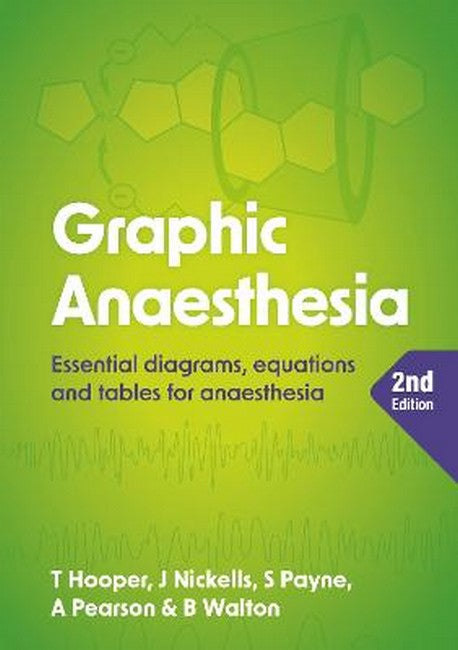Description
1. PHYSIOLOGY 1.1 Cardiac; 1.2 Circulation; 1.3 Respiratory; 1.4 Neurology; 1.5 Renal; 1.6 Gut; 1.7 Acid-base; 1.8 Metabolic; 1.9 Endocrine; 1.10 Body fluids; 1.11 Haematology; 1.12 Cellular; 1.13 Immunity; 1.14 Muscle; 1.15 Pregnancy and paediatrics 2. ANATOMY 2.1 Functional anatomy; 2.2 Anatomy for regional anaethesia 3. PHARMACODYNAMICS AND KINETICS 3.1 Clearance; 3.2 Compartment model - one and two compartments; 3.3 Compartment model - three compartments; 3.4 Dose-response curves; 3.5 Elimination; 3.6 Elimination kinetics; 3.7 Half-lives and time constants; 3.8 Meyer-Overton hypothesis; 3.9 Target-controlled infusions; 3.10 Volume of distribution; 3.10 Wash-in curves for volatile agents 4. DRUGS 4.1 Alpha 2 receptor agonists; 4.2 Anaesthetic agents - etomidate; 4.3 Anaesthetic agents - ketamine; 4.4 Anaesthetic agents - propofol; 4.5 Anaesthetic agents - thiopentone; 4.5 Local anaesthetics - mode of action; 4.6 Antigoagulants; 4.7 Antiemetics; 4.8 Antiplatelets; 4.9 Benzodiazepines; 4.10 Blood products; 4.11 Direct acting oral anticoagulants; 4.12 Intralipid; 4.13 Local anaesthetics - mode of actin; 4.14 Local anaesthetics - properties; 4.15 Neuromuscular blockers - mode of action; 4.16 Neuromuscular blocking agents - depolarizing; 4.17 Neuromuscular blocking agents - non-depolarizing; 4.18 Opioids - mode of action; 4.19 Opioids - properties; 4.20 Paracetamol and non-steroidal anti-inflammatory drugs; 4.21 Reversal agents; 4.22 Tranexamic acid; 4.23 Volatile anaesthetic agents - mode of action; 4.24 Volatile anaesthetic agents - physiological effects; 4.25 Volatile anaesthetic agents - properties 5. PHYSICS 5.1 Avogadros hypothesis; 5.2 Beer-Lambert law; 5.3 Critical temperatures and pressure; 5.4 Diathermy; 5.5 Doppler effect; 5.6 Electrical safety; 5.7 Electricity; 5.8 Exponential function; 5.9 Ficks law of diffusion; 5.10 Gas laws - Boyles law; 5.11 Gas laws - Charles law; 5.12 Gas laws - Gay-Lussacs (Third Perfect) law; 5.13 Gas laws - ideal gas law and Daltons law; 5.14 Grahams law; 5.15 Heat; 5.16 Henrys law; 5.17 Humidity; 5.18 Laser; 5.19 Metric prefixes; 5.20 Power; 5.21 Pressure; 5.22 Raman effect; 5.23 Reflection and refraction; 5.24 SI units; 5.25 Triple point of water and phase diagram; 5.26 Types of flow; 5.27 Wave characteristics; 5.28 Wheatstone bridge; 5.29 Work 6. CLINICAL MEASUREMENT 6.1 Bourdon gauge; 6.2 Clark electrode; 6.3 Damping; 6.4 Depth of anaesthesia monitoring; 6.5 Fuel cell; 6.6 Monitoring of neuromuscular blockade; 6.7 Oximetry - paramagnetic analyser; 6.8 pH measuring system; 6.9 Pulse oximeter; 6.10 Severinghaus carbon dioxide electrode; 6.11 Temperature measurement; 6.12 Thermocouple and Seebeck effect 7. EQUIPMENT 7.1 Bag valve mask resuscitator; 7.2 Breathing circuits - circle system; 7.3 Breathing circuits - Maplesons classification; 7.4 Bronchoscope; 7.5 Cleaning and contamination; 7.6 Continuous renal replacement therapy - extracorporeal circuit; 7.7 Continuous renal replacement therapy - modes; 7.8 Gas cylinders; 7.9 Glucometer; 7.10 Humidifier; 7.11 Intra-aortic balloon pump; 7.12 Laryngoscopes; 7.13 Oxygen delivery systems - Bernoulli principle and Venturi effect; 7.14 Piped gases; 7.15 Scavenging; 7.16 Ultrasound; 7.17 Vacuum-insulated evaporator; 7.18 Vaporizer; 7.19 Ventilation - pressure-controlled; 7.20 Ventilation - volume-controlled; 7.21 Viscoelastic tests of clotting 8. STATISTICS 8.1 Mean, median and mode; 8.2 Normal distribution; 8.3 Number needed to treat; 8.4 Odds ratio; 8.5 Predictive values; 8.6 Sensitivity and specificity; 8.7 Significance tests; 8.8 Statistical variability; 8.9 Type I and type II errors 9. CLINICAL PREDICTION 9.1 ASA classification; 9.2 Clinical frailty scale; 9.3 Cormack and Lehane classification; 9.4 Mallampati classification; 9.5 Scoring systems

